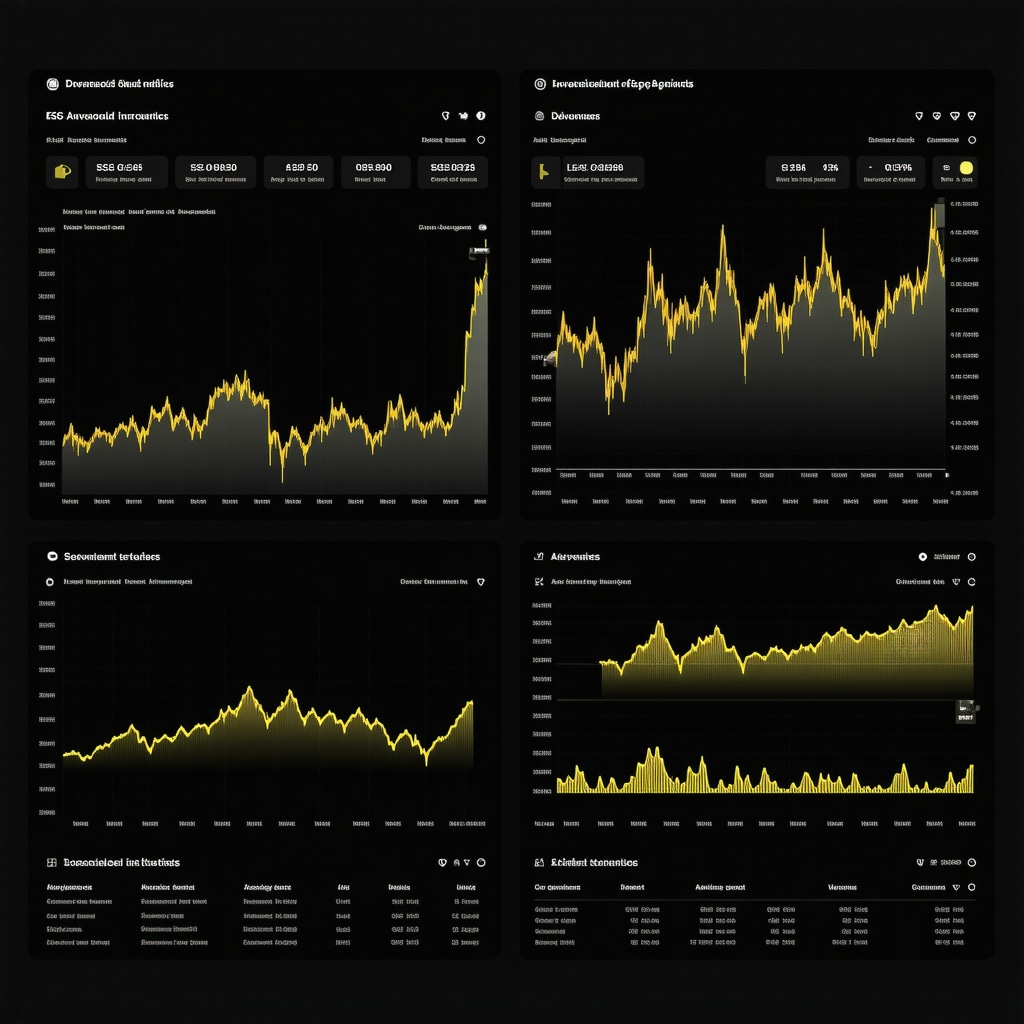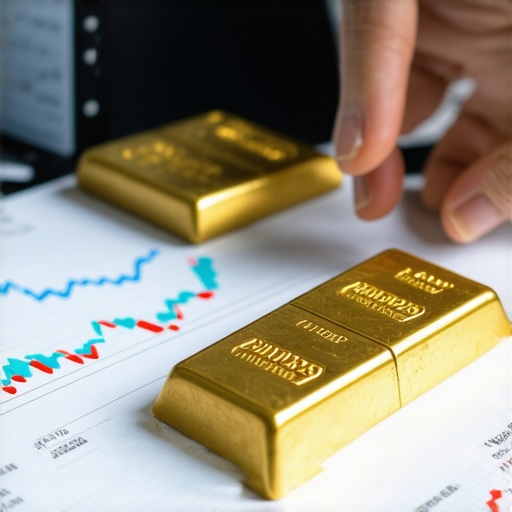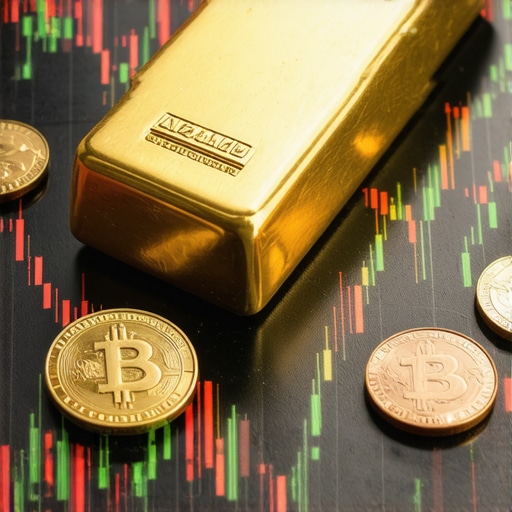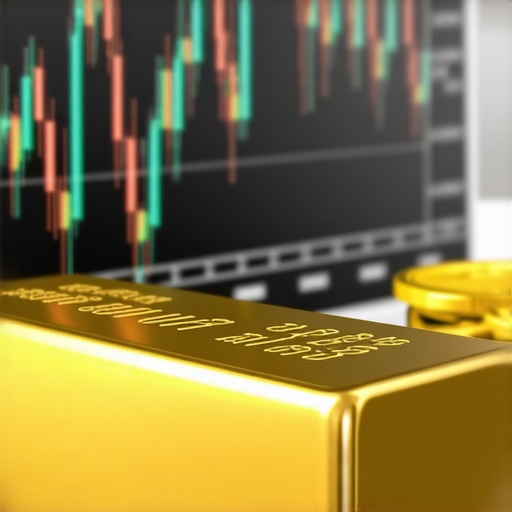Why Gold Remains the Ultimate Inflation Hedge in Uncertain Times
In an era marked by rising inflation and economic volatility, investors are increasingly seeking assets that preserve purchasing power. Gold, with its centuries-long reputation as a store of value, stands out as a resilient choice. Unlike fiat currencies susceptible to inflationary erosion, gold’s intrinsic scarcity and global demand dynamics make it a compelling safeguard for wealth preservation.
Innovative Approaches: Beyond Buying Physical Gold
While owning physical gold coins or bars has been a traditional strategy, today’s savvy investors leverage a diverse array of gold investment vehicles. Gold Exchange-Traded Funds (ETFs), mutual funds focused on gold mining equities, and even futures contracts offer varying degrees of liquidity, risk exposure, and potential returns. Diversifying across these instruments can optimize portfolio resilience against inflationary pressures.
How Can Combining Different Gold Investment Vehicles Enhance Inflation Protection?
Integrating physical gold with financial instruments such as gold ETFs and mining stocks creates a balanced exposure. Physical gold provides tangible security and direct inflation hedge, while ETFs offer ease of trading and liquidity. Meanwhile, mining stocks can amplify gains during gold price rallies but carry company-specific risks. This multi-faceted approach not only mitigates risk but also capitalizes on different market dynamics.
Timing and Market Sentiment: Navigating the Gold Price Drivers
Understanding the economic indicators that influence gold prices is essential for smart investing. Factors such as central bank gold purchases, geopolitical tensions, and currency fluctuations directly impact market sentiment. For instance, increased gold buying by central banks often signals confidence in gold as a safe asset, driving prices higher. Staying informed about these trends enables investors to time their entries and exits more effectively.
Practical Wisdom: Safeguarding Your Gold Investment
Security and authenticity remain paramount when acquiring physical gold. Partnering with reputable dealers, verifying hallmark certifications, and choosing secure storage solutions protect investors from fraud and loss. For those interested in gold ETFs or mutual funds, selecting funds with transparent management and low expense ratios can enhance long-term returns.
For readers keen on expanding their knowledge of gold mutual funds and their role in portfolio diversification, explore this detailed guide on gold mutual funds explained and top picks for secure returns in 2025.
Ready to fortify your portfolio against inflation with smart gold strategies? Share your thoughts or questions below to join the conversation and deepen your investment acumen!
Authoritative insights from the World Gold Council highlight that gold’s average real return outpaces inflation over long periods, reinforcing its strategic role in inflation protection (World Gold Council Investment Demand Report).
Learning from Experience: Balancing Gold Investments with Patience and Strategy
Reflecting on my own journey with gold investing, I’ve realized the importance of patience and flexibility. Early on, I focused heavily on physical gold, drawn by its tangible nature and historical reliability. However, as market dynamics evolved, I began incorporating gold ETFs and mining stocks into my portfolio. This shift wasn’t just about chasing returns but about embracing a more nuanced risk profile. Physical gold offers unmatched security during turbulent times, yet ETFs provide the agility to respond swiftly to market changes, and mining stocks can deliver impressive gains when timed well.
What Are the Hidden Risks and Rewards in Gold Mining Stocks Compared to Physical Gold?
Gold mining stocks, while alluring due to their potential for amplified returns, carry unique risks that physical gold doesn’t. Company management decisions, operational challenges, and geopolitical factors can all impact stock performance irrespective of gold prices. I remember a period when a mining stock I held plummeted despite rising gold prices because of a labor strike at the mine. This experience taught me the value of diversifying within the gold sector and not relying solely on mining equities. Physical gold remains a stable anchor, especially during unexpected events.
Insights on Market Sentiment and Central Bank Movements
One intriguing aspect I’ve observed is how central bank purchasing patterns can serve as a barometer for gold’s future trajectory. According to the World Gold Council’s Central Bank Gold Reserves report, these institutions have been steadily increasing their gold reserves, signaling confidence amidst economic uncertainty. Tracking these moves helped me anticipate bullish phases in gold prices. It also reinforced that gold’s value is not merely speculative but backed by strategic global financial decisions.
Practical Tips: Securing and Managing Your Gold Portfolio Effectively
From personal experience, securing physical gold requires more than just buying from reputable dealers—it extends to storage and insurance. I opted for a safety deposit box at my bank to mitigate theft risks, although some investors prefer home safes with advanced security. For ETFs and mutual funds, I prioritize those with transparent holdings and low expense ratios to maximize net returns. It’s also wise to review your gold portfolio periodically to rebalance according to market conditions and personal financial goals.
If you’re curious about diversifying your portfolio with gold mutual funds, check out this comprehensive beginners guide to gold mutual funds for practical entry tips in 2025.
I’d love to hear about your experiences with gold investing. Have you found a particular approach that suits your risk tolerance and financial goals? Feel free to share your stories or questions in the comments below!
Strategic Portfolio Integration: Leveraging Gold Amidst Diverse Asset Classes
One of the most sophisticated approaches to gold investing involves its strategic integration within a diversified portfolio that includes equities, fixed income, and alternative assets. Gold’s low correlation with traditional financial instruments makes it an effective risk mitigator during market downturns. However, the nuance lies in the allocation size and timing—overexposure can erode portfolio returns during bullish equity markets, whereas underexposure might fail to provide sufficient inflation hedging.
Advanced investors often employ dynamic allocation models that adjust gold exposure in response to macroeconomic indicators such as real interest rates, currency strength, and geopolitical risk indices. For example, during periods of negative real interest rates, gold typically outperforms, suggesting a tactical increase in allocation could optimize risk-adjusted returns.
How Do Real Interest Rates and Currency Movements Influence Gold’s Inflation-Hedging Effectiveness?
Real interest rates, defined as nominal interest rates minus inflation, inversely affect gold prices; when real yields fall below zero, gold becomes more attractive as it yields no interest but preserves purchasing power. Concurrently, US dollar strength plays a critical role since gold is dollar-denominated. A weaker dollar generally boosts gold prices, enhancing its inflation-hedging capacity. Investors monitoring these variables can anticipate shifts in gold’s relative appeal and adjust their positions accordingly.
For a deeper quantitative analysis of these relationships, the Investopedia resource on real interest rates provides a comprehensive framework.
Technological Innovations and Sustainable Practices in Gold Mining: Implications for Investment
The gold mining sector is undergoing transformative changes driven by advances in technology and increasing emphasis on environmental, social, and governance (ESG) criteria. Innovations such as automation, drone surveillance, and AI-driven geological analysis are enhancing operational efficiency and reducing environmental footprints. These developments can improve profit margins and lower investment risks associated with mining operations.
Simultaneously, investors are becoming more discerning about ESG compliance, favoring mining companies that demonstrate sustainable practices and transparent governance. This shift not only affects stock valuations but also aligns gold investing with broader ethical imperatives, potentially attracting a new class of socially conscious investors.
Deep Dive: ESG Integration in Gold Mining Stocks – Is It Worth the Premium?
The premium valuation of ESG-compliant gold miners often sparks debate among investors. While these stocks may trade at higher multiples due to perceived lower risk and better governance, the long-term benefits include enhanced regulatory resilience, improved stakeholder relations, and access to green financing. Evaluating ESG metrics alongside traditional financial indicators can unveil hidden value and mitigate reputational risks that might otherwise impact returns.
Risk Management: Hedging Gold Exposure Through Options and Futures
Beyond physical holdings and equities, sophisticated investors utilize derivatives like options and futures to hedge gold exposure or speculate on price movements. Options strategies—such as protective puts or covered calls—offer tailored risk-return profiles that can protect against downside while preserving upside potential. Futures contracts enable locking in gold prices, useful for managing portfolio volatility in times of rapid price fluctuations.
Mastering these instruments requires a deep understanding of market mechanics, margin requirements, and timing. When employed judiciously, derivatives can enhance portfolio resilience and complement traditional gold investments.
Interested in exploring how derivatives can optimize your gold investment strategy? Dive into our advanced guide or engage with expert advisors to tailor solutions for your portfolio.
Dynamic Allocation Strategies: Mastering Gold’s Role in a Changing Economic Landscape
As global economies oscillate between inflationary spikes and monetary tightening, the importance of adaptable gold allocation in diversified portfolios cannot be overstated. Seasoned investors employ algorithmic models that integrate macroeconomic indicators—such as real interest rates, inflation expectations, and geopolitical risk scores—to recalibrate gold exposure dynamically. This nuanced approach transcends static allocation rules, aiming to optimize risk-adjusted returns by anticipating market inflection points where gold’s inflation-hedging prowess is most potent.
How Can Investors Quantify the Impact of Macroeconomic Indicators on Gold Price Volatility?
Quantitative analysis leveraging econometric models like Vector Autoregression (VAR) or GARCH can elucidate the sensitivity of gold prices to shocks in inflation rates, currency fluctuations, and central bank policies. For instance, statistically significant correlations between negative real yields and gold price surges can inform tactical positioning. Utilizing such models requires robust data and technical expertise but offers a competitive edge by enabling predictive insights rather than reactive moves.
For an authoritative dive into these quantitative methodologies, the CFA Institute’s research on gold and inflation dynamics provides an exhaustive analytical framework.
Integrating ESG Metrics: Pioneering Sustainable Gold Investment Paradigms
The intersection of sustainability and precious metals investing is reshaping industry paradigms. Incorporating Environmental, Social, and Governance (ESG) criteria into gold investment decisions extends beyond ethical considerations—it materially influences risk profiles and valuation multiples. Mining companies adopting renewable energy, transparent governance, and community engagement protocols are increasingly favored by institutional investors seeking to mitigate regulatory risks and ensure long-term operational viability.
Moreover, the rise of green bonds and sustainability-linked financing mechanisms is channeling capital toward mines with exemplary ESG compliance, potentially generating alpha through enhanced credit conditions and stakeholder trust.

What Metrics Best Evaluate ESG Performance in Gold Mining Companies?
Investors should scrutinize quantifiable indicators such as carbon emissions intensity per ounce of gold produced, water usage efficiency, workforce diversity statistics, and governance transparency scores provided by ESG rating agencies. These metrics, when combined with traditional financial analyses, empower investors to discern companies with resilient operational models and lower reputational risk.
Derivatives Mastery: Sophisticated Hedging and Leverage Techniques in Gold Investment
Advanced investors often harness options and futures not merely for speculation but as calibrated risk management tools. Protective put options serve as insurance against sharp price declines, enabling downside protection with limited premium costs. Conversely, covered call strategies can generate incremental income in sideways markets without relinquishing physical gold holdings.
Futures contracts facilitate precise locking of purchase or sale prices, crucial in volatile macroeconomic cycles. However, margin requirements and basis risk necessitate vigilant monitoring and expert execution to prevent adverse outcomes.
To elevate your portfolio’s resilience, consider consulting with derivatives specialists who can tailor strategies aligned with your risk tolerance and market outlook.
Frequently Asked Questions (FAQ)
Why is gold considered a superior hedge against inflation compared to other assets?
Gold’s intrinsic scarcity, universal acceptance, and historical preservation of purchasing power make it uniquely effective against inflation. Unlike fiat currencies, which can be devalued by monetary expansion, gold maintains value over time, especially during periods of rising inflation and negative real interest rates.
How do gold ETFs differ from physical gold in terms of inflation protection?
Gold ETFs provide liquidity and ease of trading, representing ownership of gold without the need for physical storage. While they track gold prices closely, they do not offer the tangible security of physical gold, which is impervious to counterparty risk. Combining both can optimize inflation hedging by balancing convenience with asset security.
What role do gold mining stocks play in an inflation-hedged portfolio?
Gold mining stocks offer leveraged exposure to gold price movements, potentially amplifying gains during price rallies. However, they carry company-specific operational and geopolitical risks that physical gold does not. Including mining equities diversifies sources of return but requires careful risk assessment and ESG considerations.
How do real interest rates influence gold prices and its effectiveness as an inflation hedge?
Real interest rates inversely affect gold prices; negative real yields reduce the opportunity cost of holding non-yielding gold, increasing its appeal. When real rates are low or negative, gold tends to outperform, enhancing its role as a hedge against inflation and currency depreciation.
Can ESG factors materially impact the valuation of gold mining companies?
Yes. Mining firms with strong ESG performance often benefit from enhanced regulatory compliance, stakeholder trust, and access to sustainable financing. Though they may trade at premiums, their long-term risk mitigation and operational resilience can translate into superior investment returns.
What are the key risks when using derivatives like options and futures to hedge gold exposure?
Derivatives introduce margin requirements, basis risk, and complexity in timing. Mismanagement can lead to significant losses beyond the underlying asset’s price movements. Proper expertise and risk controls are essential to harness these tools effectively for hedging or speculation.
How can central bank gold purchases influence market sentiment and prices?
Central banks accumulating gold signal confidence in gold as a strategic reserve, often driving prices higher. Monitoring these purchases provides insight into macroeconomic confidence levels and potential bullish trends in gold markets.
What metrics should investors use to evaluate ESG performance in gold miners?
Important metrics include carbon emissions per ounce of gold produced, water usage efficiency, workforce diversity, community engagement, and governance transparency. ESG ratings from specialized agencies provide standardized assessments aiding investment decisions.
How should one balance gold allocation within a diversified investment portfolio?
Optimal gold allocation depends on risk tolerance, economic outlook, and portfolio objectives. Dynamic strategies adjusting exposure based on macroeconomic indicators like inflation expectations and real interest rates can enhance risk-adjusted returns and inflation protection.
Is it better to buy physical gold or invest through financial instruments for inflation protection?
Each approach has merits: physical gold offers tangible security and direct inflation hedge; ETFs and mutual funds provide liquidity and ease of access; derivatives enable sophisticated risk management. A combination tailored to individual goals and market conditions typically yields the best results.
Trusted External Sources
- World Gold Council (https://www.gold.org): Offers comprehensive research on gold investment demand, central bank activities, and market trends, providing authoritative data and insights crucial for understanding gold’s role in inflation hedging.
- CFA Institute Research Foundation (https://www.cfainstitute.org): Provides detailed quantitative analyses and frameworks on the dynamic relationship between gold prices, inflation, and macroeconomic variables, valuable for advanced portfolio management.
- Investopedia – Real Interest Rates (https://www.investopedia.com/terms/r/realinterestrate.asp): Delivers clear explanations and practical insights into real interest rates and their impact on investment assets like gold, aiding both beginners and experts.
- Sustainalytics and MSCI ESG Ratings: Specialized agencies offering standardized ESG scores and metrics to evaluate sustainability and governance performance of gold mining companies, essential for ethical and risk-conscious investing.
- International Council on Mining and Metals (ICMM) (https://www.icmm.com): Provides industry best practices and reports on sustainable mining technologies and ESG initiatives, informing investors on emerging trends and risks in gold mining.
Conclusion: Synthesizing Gold’s Strategic Role as an Inflation Hedge
Gold remains an unparalleled asset for inflation protection, blending intrinsic value with strategic portfolio diversification. Navigating its multifaceted investment vehicles—from physical bullion to ETFs, mining equities, and derivatives—empowers investors to tailor exposure aligning with risk tolerance and market dynamics. Critical factors such as real interest rates, currency fluctuations, central bank behavior, and ESG considerations deepen the complexity and opportunity inherent in gold investing.
Dynamic allocation strategies that integrate macroeconomic indicators and quantitative models enhance the effectiveness of gold as a hedge, while technological and sustainable innovations in mining shape the sector’s future investment landscape. Ultimately, a well-informed, flexible approach to gold investment fortifies wealth preservation against inflationary uncertainty.
Engage with this knowledge by sharing your insights or questions, exploring related expert analyses, and applying these advanced strategies to optimize your portfolio’s resilience in 2025 and beyond.











This comprehensive post highlights the multifaceted nature of gold as an inflation hedge, especially with the focus on combining physical gold, ETFs, mining stocks, and derivatives. I agree that diversification across these vehicles can significantly reduce risks while maximizing potential gains during different market conditions. Personally, I’ve found integrating gold ETFs into my portfolio quite effective for liquidity and quick response to market changes, but I still hold physical gold as a secure store during turbulent times.
One aspect I’m curious about is the evolving ESG landscape in gold mining. With the rise of sustainable mining practices, do you think ESG-compliant stocks will consistently outperform traditional ones long-term? Also, how should an average investor balance the premium of ESG stocks against the potential for higher returns from non-ESG miners?